-
 Bitcoin
Bitcoin $113900
-1.39% -
 Ethereum
Ethereum $3517
-4.15% -
 XRP
XRP $3.009
1.59% -
 Tether USDt
Tether USDt $0.9997
-0.04% -
 BNB
BNB $766.8
-1.41% -
 Solana
Solana $164.6
-2.38% -
 USDC
USDC $0.9998
-0.02% -
 TRON
TRON $0.3277
0.65% -
 Dogecoin
Dogecoin $0.2023
-1.67% -
 Cardano
Cardano $0.7246
0.05% -
 Hyperliquid
Hyperliquid $38.27
-4.77% -
 Sui
Sui $3.528
-0.52% -
 Stellar
Stellar $0.3890
-0.73% -
 Chainlink
Chainlink $16.16
-2.69% -
 Bitcoin Cash
Bitcoin Cash $539.9
-4.38% -
 Hedera
Hedera $0.2425
-2.00% -
 Avalanche
Avalanche $21.71
-0.97% -
 Toncoin
Toncoin $3.662
5.73% -
 Ethena USDe
Ethena USDe $1.000
-0.02% -
 UNUS SED LEO
UNUS SED LEO $8.964
0.35% -
 Litecoin
Litecoin $107.7
2.33% -
 Shiba Inu
Shiba Inu $0.00001223
-0.40% -
 Polkadot
Polkadot $3.617
-0.97% -
 Uniswap
Uniswap $9.052
-2.49% -
 Monero
Monero $295.1
-3.79% -
 Dai
Dai $0.9999
0.00% -
 Bitget Token
Bitget Token $4.315
-1.85% -
 Pepe
Pepe $0.00001060
0.11% -
 Cronos
Cronos $0.1342
-2.72% -
 Aave
Aave $256.0
-0.87%
How to draw the Fibonacci retracement level? How to trade the 0.618 support?
Drawing Fibonacci retracement levels and trading the 0.618 support are key skills for crypto traders to enhance their technical analysis and manage risks effectively.
Jun 13, 2025 at 05:35 am
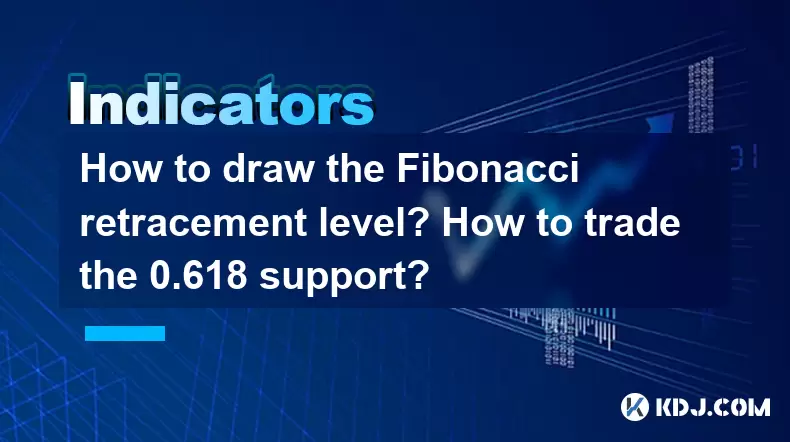
Drawing the Fibonacci retracement level and trading the 0.618 support are essential skills for any cryptocurrency trader looking to enhance their technical analysis toolkit. In this article, we will delve into the detailed process of drawing Fibonacci retracement levels and explore strategies for trading the crucial 0.618 support level in the context of cryptocurrency markets.
Understanding Fibonacci Retracement Levels
Fibonacci retracement levels are a popular tool among traders used to identify potential reversal levels. These levels are derived from the Fibonacci sequence, a series of numbers where each number is the sum of the two preceding ones. In trading, the key Fibonacci retracement levels are 23.6%, 38.2%, 50%, 61.8%, and 78.6%. Among these, the 0.618 level, also known as the golden ratio, is particularly significant due to its frequent occurrence in financial markets.
How to Draw Fibonacci Retracement Levels
Drawing Fibonacci retracement levels involves a few straightforward steps that can be easily implemented on most trading platforms. Here’s how to do it:
Select the Trend: Identify a clear and significant trend in the cryptocurrency price chart. This could be an uptrend or a downtrend.
Choose the Points: For an uptrend, select the lowest point of the trend (the swing low) and the highest point (the swing high). For a downtrend, select the highest point and the lowest point.
Apply the Fibonacci Tool: Most trading platforms have a Fibonacci retracement tool. Click and drag from the swing low to the swing high in an uptrend, or from the swing high to the swing low in a downtrend. This will automatically plot the Fibonacci levels on your chart.
Adjust if Necessary: Ensure that the levels are correctly aligned with the trend. Some platforms allow you to manually adjust the levels for precision.
Identifying the 0.618 Support Level
Once the Fibonacci retracement levels are drawn, the 0.618 level becomes a critical point of interest for traders. This level often acts as a support in an uptrend, where the price may bounce back up after retracing to this point. To identify the 0.618 support level:
- Observe Price Action: Look for instances where the price approaches the 0.618 level and then reverses. This indicates that the level is acting as a support.
- Confirm with Indicators: Use other technical indicators such as moving averages, RSI, or MACD to confirm the strength of the support at the 0.618 level.
- Volume Analysis: Higher trading volume near the 0.618 level can further validate its role as a support.
Trading Strategies for the 0.618 Support Level
Trading the 0.618 support level effectively requires a combination of technical analysis and disciplined execution. Here are some strategies to consider:
- Buy on the Bounce: When the price reaches the 0.618 level and shows signs of reversing, consider entering a long position. Set a stop-loss just below the 0.618 level to manage risk.
- Wait for Confirmation: Instead of entering immediately at the 0.618 level, wait for a candlestick pattern or a bullish indicator signal to confirm the reversal before entering a trade.
- Combine with Other Levels: Sometimes, the price might not respect the 0.618 level alone. Combining it with other Fibonacci levels, such as the 50% or 38.2% levels, can provide a more robust trading strategy.
Risk Management and the 0.618 Support Level
Effective risk management is crucial when trading any Fibonacci level, including the 0.618 support. Here are some tips to manage risk:
- Set Stop-Losses: Always set a stop-loss order below the 0.618 level to limit potential losses if the price breaks through the support.
- Position Sizing: Adjust your position size based on the volatility of the cryptocurrency and your overall risk tolerance.
- Diversify Trades: Do not rely solely on the 0.618 level for all your trades. Diversify your strategies and use multiple technical indicators to increase your chances of success.
Practical Example of Trading the 0.618 Support
Let's consider a practical example to illustrate how to trade the 0.618 support level in the context of a cryptocurrency like Bitcoin (BTC).
- Identify the Trend: Suppose Bitcoin has been in a strong uptrend, moving from a low of $30,000 to a high of $45,000.
- Draw Fibonacci Levels: Using the Fibonacci retracement tool, draw the levels from the low of $30,000 to the high of $45,000. The 0.618 level will be at approximately $39,000.
- Monitor Price Action: As the price retraces, it approaches the $39,000 level. You notice a bullish engulfing candlestick pattern forming at this level, indicating potential reversal.
- Enter the Trade: You decide to enter a long position at $39,000, with a stop-loss set at $38,500 (just below the 0.618 level).
- Manage the Trade: The price bounces off the $39,000 level and starts to rise. You set a take-profit at $42,000, which is a reasonable target based on previous resistance levels.
Common Mistakes to Avoid When Trading the 0.618 Support
While trading the 0.618 support level can be profitable, it’s important to be aware of common pitfalls:
- Over-reliance on a Single Indicator: Do not base your entire trading strategy on the 0.618 level alone. Use it in conjunction with other technical analysis tools.
- Ignoring Market Context: Always consider the broader market context. The 0.618 level may not hold if there are significant fundamental changes affecting the cryptocurrency.
- Poor Risk Management: Failing to set appropriate stop-losses and position sizes can lead to significant losses, even if the 0.618 level is respected.
Frequently Asked Questions
Q1: Can Fibonacci retracement levels be used for all cryptocurrencies?
Yes, Fibonacci retracement levels can be applied to any cryptocurrency that has sufficient price data and liquidity. However, the effectiveness of these levels may vary depending on the specific cryptocurrency and market conditions.
Q2: How do I know if the 0.618 level will hold as support?
There is no definitive way to know if the 0.618 level will hold as support, but you can increase your confidence by looking for confirmatory signals such as bullish candlestick patterns, supportive volume, and other technical indicators like moving averages or RSI.
Q3: What should I do if the price breaks through the 0.618 support level?
If the price breaks through the 0.618 support level, it may indicate a stronger downtrend. In this case, you should consider closing any long positions to limit losses and potentially look for shorting opportunities if other technical indicators align.
Q4: Can the 0.618 level act as resistance in a downtrend?
Yes, in a downtrend, the 0.618 level can act as resistance. If the price rallies to this level and then reverses downward, it suggests that the level is acting as a resistance, and traders might consider short positions at this point.
Disclaimer:info@kdj.com
The information provided is not trading advice. kdj.com does not assume any responsibility for any investments made based on the information provided in this article. Cryptocurrencies are highly volatile and it is highly recommended that you invest with caution after thorough research!
If you believe that the content used on this website infringes your copyright, please contact us immediately (info@kdj.com) and we will delete it promptly.
- Bitcoin Strategy: Saylor's Not Hoarding, He's Building an Empire
- 2025-08-02 22:30:12
- Bitcoin Bloodbath: Macro Pressures and Liquidations Unleash Crypto Chaos
- 2025-08-02 22:30:12
- Worldcoin, Identity, WLD Price: Decoding the NYC Crypto Buzz
- 2025-08-02 21:10:12
- Shiba Inu: Utility and Community Strength Drive Crypto's Evolution
- 2025-08-02 21:50:12
- Crypto Donations, Trump PAC, and Bitcoin: A New York Minute on Political Coin
- 2025-08-02 20:30:12
- Crypto Market Under Pressure: Bearish Momentum and Rising Volatility Take Hold
- 2025-08-02 20:30:12
Related knowledge

Is it possible to alter or remove data from a blockchain?
Aug 02,2025 at 03:42pm
Understanding the Immutable Nature of BlockchainBlockchain technology is fundamentally designed to ensure data integrity and transparency through its ...

How do I use a blockchain explorer to view transactions?
Aug 02,2025 at 10:01pm
Understanding What a Blockchain Explorer IsA blockchain explorer is a web-based tool that allows users to view all transactions recorded on a blockcha...
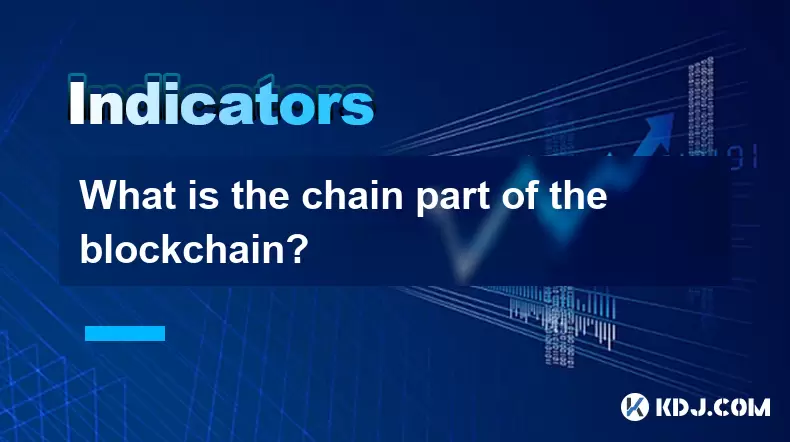
What is the chain part of the blockchain?
Aug 02,2025 at 09:29pm
Understanding the Concept of 'Chain' in BlockchainThe term 'chain' in blockchain refers to the sequential and immutable linkage of data blocks that fo...
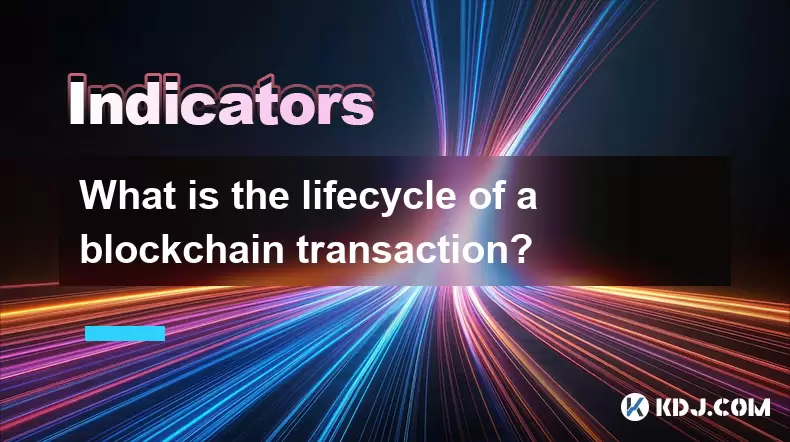
What is the lifecycle of a blockchain transaction?
Aug 01,2025 at 07:56pm
Initiation of a Blockchain TransactionA blockchain transaction begins when a user decides to transfer digital assets from one wallet to another. This ...
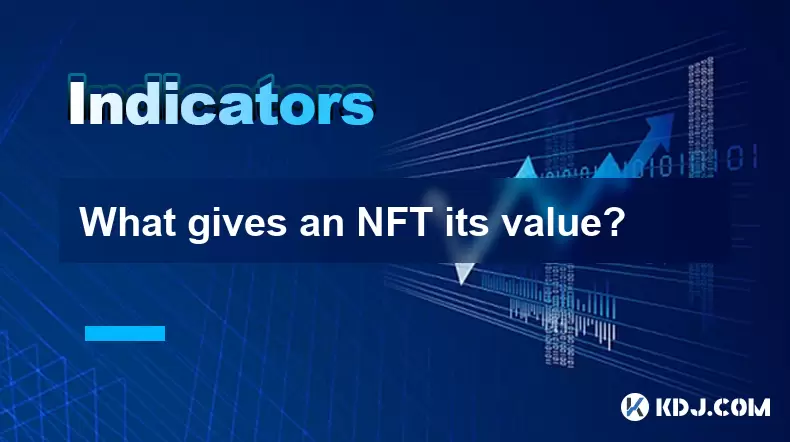
What gives an NFT its value?
Aug 02,2025 at 10:14pm
Understanding the Core Concept of NFTsA Non-Fungible Token (NFT) is a unique digital asset verified using blockchain technology. Unlike cryptocurrenci...
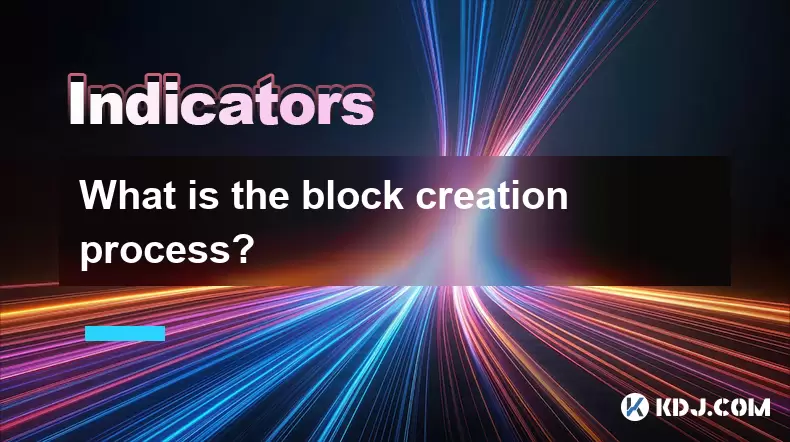
What is the block creation process?
Aug 02,2025 at 02:35am
Understanding the Block Creation Process in CryptocurrencyThe block creation process is a fundamental mechanism in blockchain networks that enables th...

Is it possible to alter or remove data from a blockchain?
Aug 02,2025 at 03:42pm
Understanding the Immutable Nature of BlockchainBlockchain technology is fundamentally designed to ensure data integrity and transparency through its ...

How do I use a blockchain explorer to view transactions?
Aug 02,2025 at 10:01pm
Understanding What a Blockchain Explorer IsA blockchain explorer is a web-based tool that allows users to view all transactions recorded on a blockcha...

What is the chain part of the blockchain?
Aug 02,2025 at 09:29pm
Understanding the Concept of 'Chain' in BlockchainThe term 'chain' in blockchain refers to the sequential and immutable linkage of data blocks that fo...

What is the lifecycle of a blockchain transaction?
Aug 01,2025 at 07:56pm
Initiation of a Blockchain TransactionA blockchain transaction begins when a user decides to transfer digital assets from one wallet to another. This ...

What gives an NFT its value?
Aug 02,2025 at 10:14pm
Understanding the Core Concept of NFTsA Non-Fungible Token (NFT) is a unique digital asset verified using blockchain technology. Unlike cryptocurrenci...

What is the block creation process?
Aug 02,2025 at 02:35am
Understanding the Block Creation Process in CryptocurrencyThe block creation process is a fundamental mechanism in blockchain networks that enables th...
See all articles

























































































